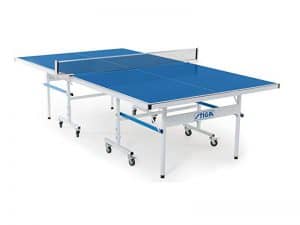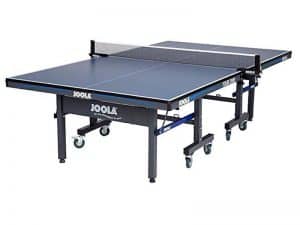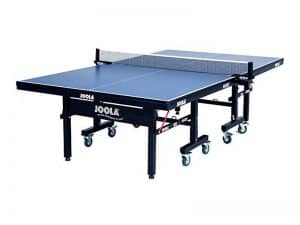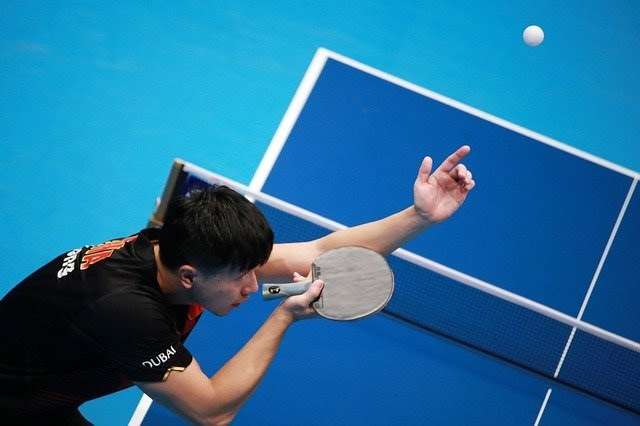Speed, Spin and Control
- Eugene Sandoval
- Last updated
Today’s article is about ping pong spins – a set of table tennis serve techniques that set beginners from advanced table tennis players.
Spin shots are—as the name implies—strikes that send the ball into a spinning motion. It can make the motion very difficult to counter when it reaches the other side of the table and the opponent’s racket. Countering is usually done by a so-called “anti-spin”. We’ll cover all these techniques in the text that follows.
One thing to remember, though: just as with any sport, the more you practice, the more exquisite the spin, and the more of an advanced player you become. It also means that you’ll be able to counter the advanced spins of your skilled opponents. So, practice makes it perfect, and it’s why you need to practice a lot (see the Tips & Tricks section below for more on this).
Do you want more advanced coaching?
- 20+ Hours of Training
- From Beginner to Master
- Coached by Chinese National Champion
What Is a Ping Pong Spin Shot?
Spin shots are performed by brushing the ball with the racket. This makes the ball spin rapidly around a particular axis, which results in an unexpected flight path & difficult countering. It also results in the ball bouncing weirdly from the table or the opponent’s ping pong paddle.
Spins are a technique that advanced level ping pong players with high-level table tennis skills use in order to confuse, overextend, and dominate their opponent. Have a look at what you can do if you master spin shots:
We cover the different types of spin shots just below.
Different Types of Spin Shots
How and in which direction the ball rotates depends on the type of spin shot and the racket angle.
Have a look first at the axes scheme so that it makes sense when you are reading about the variants and how they are performed.
These are the variants that you should practice, starting with the easier ones:
EASY: Topspin
Topspin (forehand) is the easiest strike to master. As you can see on the video, you modify your racket angle by slightly rotating it forward on the Y-axis.
When you use a forward motion to strike the ping pong ball, it makes it rotate on the same Y-axis, which in turn produces further forward bounces when striking the ping pong table. To exaggerate the effect you can of course use a heavy topspin, which means striking stronger and faster at the required angle.
Topspins are usually countered by themselves.
MEDIUM: Backspin and Sidespin
Backspin (forehand) and sidespin are medium-level chops that require some more practice to get them right.
A backspin stroke entails rotating your racket on the Y-axis, but this time backwards. When striking the ball, you make it spin along the Y-axis, but in the opposite direction of a topspin.
A sidespin, on the other hand, entails modifications on two axes, the Z-axis and the X-axis. Your hand stands almost straight on the Y-axis, the strike motion goes forward on the X-axis, and the ball is sent spinning around the Z-axis, resulting in all sorts of craziness.
You can either counter these with their counterparts (i.e. backspin or sidespin), or use a precise no-spin strike to send the ball in a weird direction and confuse your unexpectant opponent—and vice-versa.
DIFFICULT: Corkspin and Backhand variants
The corkspin is usually used for serving because it is difficult to perform in the heat of the game.
The backhand variants or the forehand chops we’ve explored above are significantly more difficult to master as they are the most advanced techniques. The reason is that they use a slightly unnatural hand position and muscle groups that are weaker.
However, backhand chops make for great countering and defensive shots, even for some seemingly impossible situations. Therefore, if you’d like to become a table tennis master you’ll have to get them under your belt as well.
What Side of the Racket is Better for Spin?
While we’re at it, we can explore this problem as well.
Which side is better depends on the situation, of course. From the onset, forehand strikes are better for creating spins since they are a more natural way to strike a ball. You are facing your opponent and your hands are naturally exposed on their internal side.
However, as mentioned above, countering some difficult situations can require creating spin with backhand strikes. For example, you are hunting a ball that went far from the end of the table and it will pass you by if you don’t react. Your reaction won’t be fast enough if you go with a forehand counter, so you extend a backhand side counter—and you successfully reach and return the table tennis ball.
Another example would be where you want to confuse your opponent, so you produce a backhand table tennis serve
Tips & Tricks on Practicing Your Spins
As we mentioned already, to become proficient at table tennis you need to practice a lot. There are several things that can help you on the journey.
Get a Coach
The first one, and probably among the most important, is to get a coach. We can spend a whole day here explaining the axes and how you should strike, and you can spend a year watching YouTube videos in order to learn what a coach will teach you in 10 minutes.
A good coach will explain every single technique, show you how to do it, discover your errors, and set them right.
Get a Robot
Unfortunately, your coach and your friends get tired and their shoulders hurt. After this, you are left alone, bouncing the ball against a wall just like Forrest Gump. No more.
You can now get a special serving robot that can serve you different balls. This enables you to practice all the different spins and counters as long as you like, or as long as it takes to master them. Plus, it never gets tired or cranky, which is great.
Get a Quality Racket
Of course, getting a high-quality racket is very important. Low-grade rubber, unbalanced design, and low-quality wood make for a terrible tool that is incapable of producing a strong or precise spin.
Practice, practice, practice & then some
Finally, we get to the most important part: practicing. Practice makes it perfect, and in order to become good at producing ping pong spins, you need to practice a lot. Luckily, the coach, robot, and friends, as well as our tips can help you achieve this. Happy spinning!
You Might Also Read: How To Play Against Choppers
Eugene (Gene) Sandoval has been one of those guys who spent too many hours around ping pong tables in high school. However, soon enough, Gene understood that there is more to ping pong than having fun. That is how he started a journey that made Eugene one of the experienced semi-professional ping pong players in the United States. As the founder of the PingPongRuler, Eugene spends most of his time surrounded by ping pong tables and research. He always has this knack for coming up with new ping pong strategies and telling the good and bad equipment apart.
-
Eugene Sandovalhttps://pingpongruler.com/author/admin/
-
Eugene Sandovalhttps://pingpongruler.com/author/admin/
-
Eugene Sandovalhttps://pingpongruler.com/author/admin/
-
Eugene Sandovalhttps://pingpongruler.com/author/admin/
Popular Products
Join our email list for exclusive reviews & the latest Ping Pong News
Sign up to our newsletter and stay up-to-date with the latest news in the ping pong world, and be the first to read our new product reviews. We promise, no spam

















